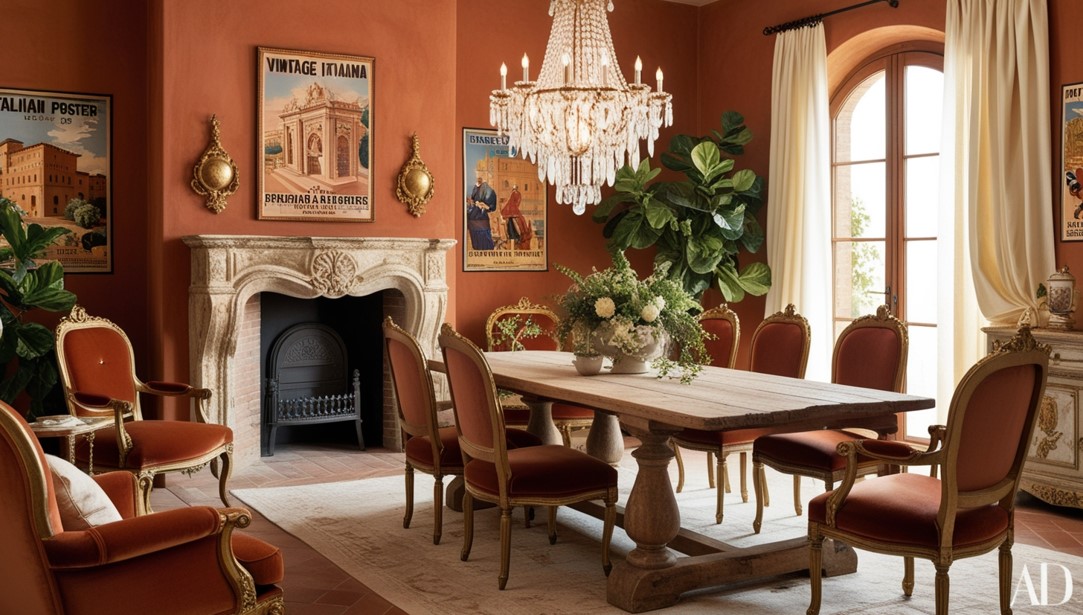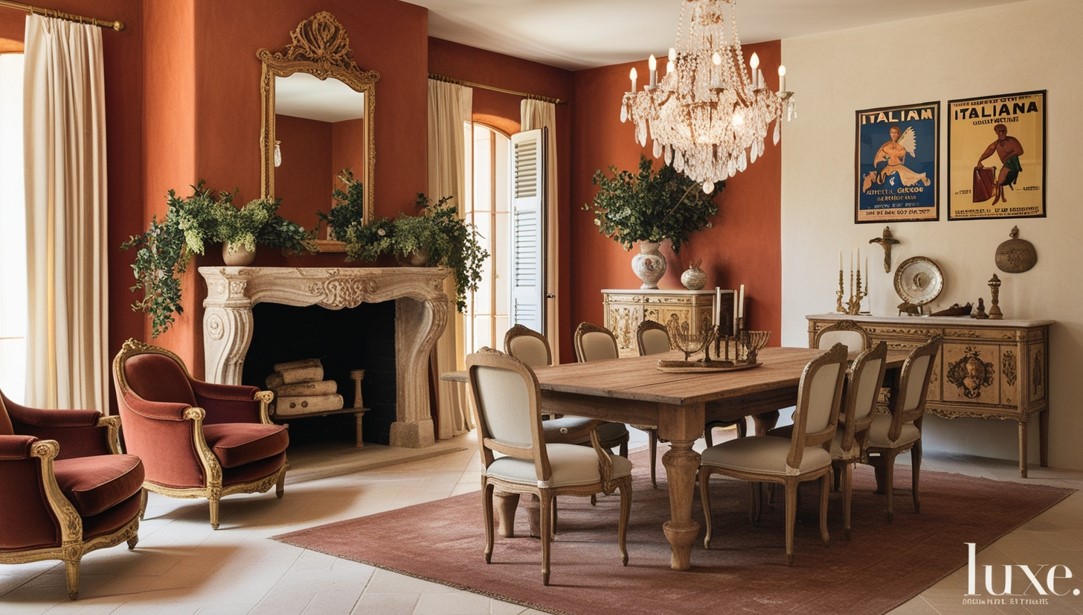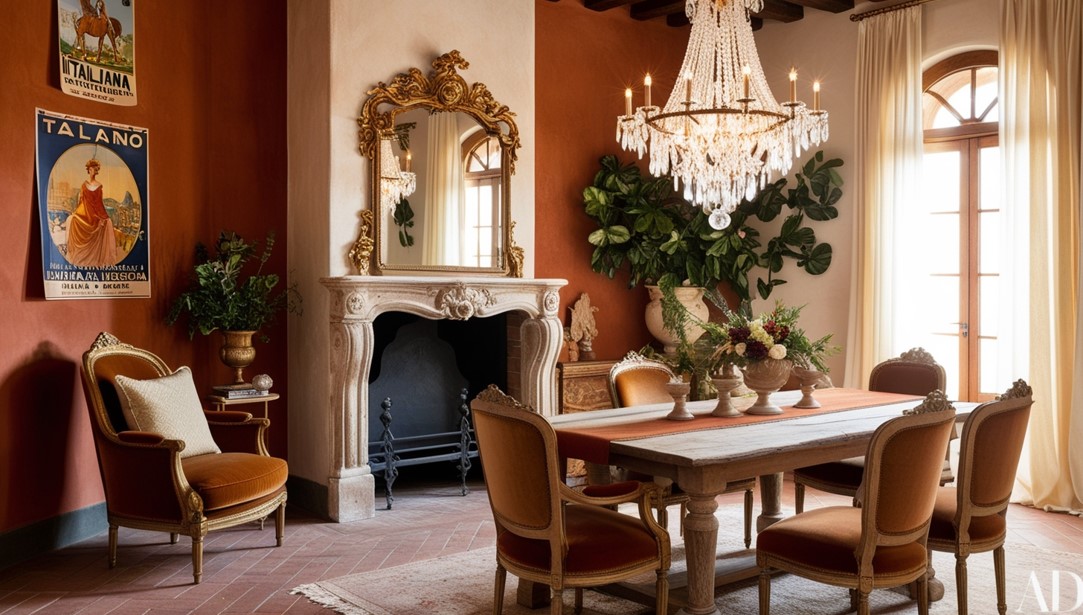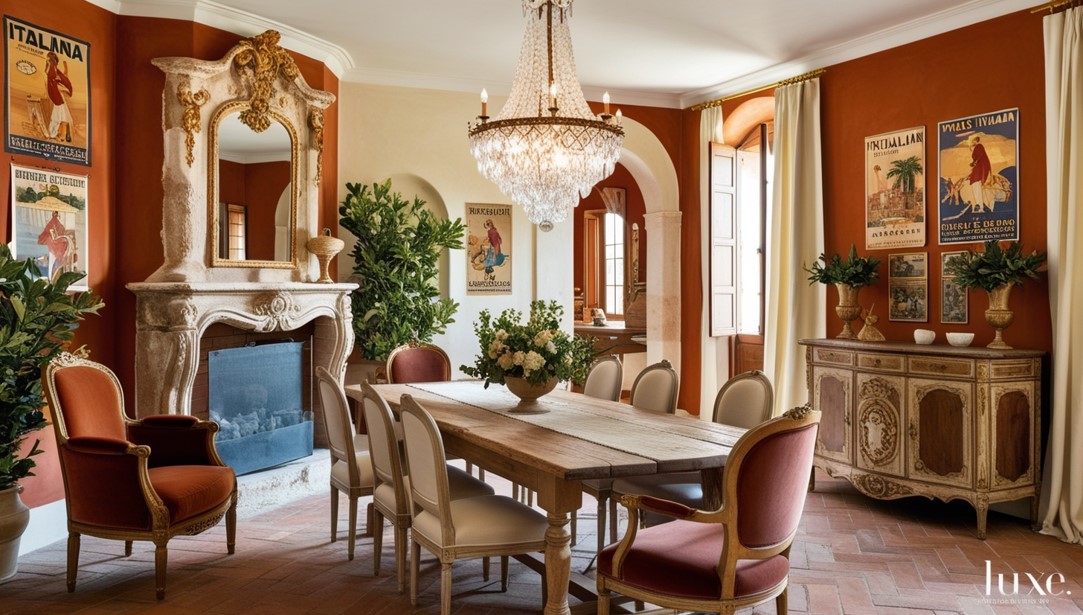Italian home decor blends elegance, craftsmanship, and timeless beauty. Known for its sophisticated style and rich cultural heritage, Italian design has influenced interiors worldwide for centuries. From the grandeur of Renaissance architecture to the minimalist lines of modern Italian furniture, Italian decor offers something for everyone, from luxurious palaces to cozy apartments.
This article explores the essence of Italian home decor, exploring the distinct features, materials, and principles that define this iconic style. Whether you want to create a luxurious, opulent space or incorporate subtle Italian influences, you’ll find inspiration and tips to elevate your home.
Key Features of Italian Home Decor
Italian decor embodies a sense of style, quality, and function. It’s not about following trends but creating a lived-in, timeless, and character-filled space. Below are the core principles that define Italian home decor.
1. Luxurious Materials and Craftsmanship
Italian decor is synonymous with traditional materials, often sourced from Italy’s rich tradition of craftsmanship. Luxurio’s silk and linen are used in upholstery, curtains, and cushions. Materials like marble, polished wood, and wrought iron are commonly featured in furniture and decor accents.
- Marble: A symbol of elegance, marble is used extensively in Italian homes, particularly in flooring, countertops, and decorative sculptures.
- Wood: Polished, rich wood is a staple in Italian furniture. Classic Italian furniture makers use solid wood to create heirloom pieces that stand the test of time.
- Iron and Brass: Wrought iron and brass are often used for intricate details in gates, staircases, and furniture accents, showcasing Italian attention to detail.
2. Bold and Rich Colors
Italian home decor often features bold, saturated colors that evoke a sense of warmth and vibrancy. The Mediterranean influence is evident in many Italian interiors, where earthy tones like terracotta, olive green, and deep reds create a welcoming, rich atmosphere. These colors are often complemented by neutral tones like cream, beige, and taupe to balance the space.
- Rich Reds and Golds: Common in traditional Italian decor, these colors evoke luxury and passion, reminiscent of Italy’s historical palaces and villas.
- Earthy Tones: Terracotta, ochre, and soft greens bring a sense of nature and the Italian countryside into the home.
3. A Balance of Classic and Modern
Italian home decor effortlessly blends the old with the new. A delicate mix of classical and modern sensibilities. While traditional Italian homes often feature ornate detailing, intricate moldings, and antique furniture, contemporary Italian design embraces minimalism, clean lines, and modern functionality.
- Traditional Pieces: Think of antique sideboards, gold-framed mirrors, and intricate carvings in furniture.
- Modern Additions: Modern Italian furniture, known for its sleek, streamlined shapes and innovative designs, adds a fresh, contemporary feel to spaces. Brands like B&B Italia, Poltrona Frau, and Cassina are leaders in Italian modern furniture.

4. Opulent and Functional Furniture
Furniture in Italian homes is not just functional; it’s an expression. Icoof-style pieces, such as the famous Italian leather sofa or hand-carved wooden chairs, are crafted with an eye for detail and quality. Whether you choose furniture for your living room, dining room, or bedroom, the selection will undoubtedly feature classic design with modern comfort.
- Sofas and Chairs: Luxurious, soft leather sofas and chairs are staples in Italian living rooms. These are often paired with high-end fabrics and detailed stitching, offering beauty and durability.
- Dining Tables and Chairs: Italian dining furniture is designed to be inviting and functional. Large, wooden tables with intricate carvings or sleek glass tables with metal frames are popular for traditional and modern settings.
- Cabinetry and Storage: Italian cabinetry is renowned for its craftsmanship and beauty. Elegant wooden cabinets, glass-fronted units, and stylish shelving are staples in Italian homes.
5. Architectural Elegance
Italian architecture has greatly influenced home decor, especially in design elements like arches, vaulted ceilings, and grand columns. Italian homes typically have well-defined structures, clean lines, and open spaces. Light, space, and color are key to achieving a sophisticated and welcoming ambiance.
- Open Floor Plans: Modern Italian homes embrace open layouts for flow and functionality.
- High Ceilings and Arches: In traditional Italian homes, high ceilings and arches are standard, often with ornate frescoes or wall paintings adding character to the space.
6. Lighting: A Statement Piece
Lighting in Italian homes is both practical and decorative. Classic Italian chandeliers and sconces are often made from crystal or hand-forged metal, reflecting the opulence of Italian design. Italian pendant lights and floor lamps add an artistic touch to modern homes while ensuring that each space is well-lit.
- Chandeliers: Crystal chandeliers add a glamorous touch to dining rooms or entryways.
- Table and Floor Lamps: Modern Italian lighting features sleek, stylish designs that complement traditional and contemporary spaces.
7. Decorative Accessories
Italian decor shines through its accessories. Thoughtfully placed vases, sculptures, mirrors, and artworks enhance a space’s elegance while infusing personality. Many Italian accessories, especially those from regions like Tuscany and Venice, are hand-crafted, making each piece unique.
- Vases: Venice’s vases are iconic, and their bold colors and intricate designs are perfect for display.
- Art: Italian art, often inspired by the country’s countryside, is frequently featured in Italian homes, whether reproductions of Renaissance or modern art pieces.
Incorporating Italian Decor into Your Home
If you’re drawing, you’re Italian, but aren’t sure how to incorporate it into your report:
1. Start with Statement Pieces
An Italian-inspired space doesn’t have to be with furniture decor. Introduce one or two statement pieces, like a leather sofa, a beautifully carved wooden dining table, or a Murano glass vase. These will immediately infuse your room with Italian charm.
2. Mix Traditional with Modern
As mentioned earlier, Italian decor effortlessly combines old and new. For example, you can mix a vintage, hand-carved chair with a modern, sleek coffee table. This fusion of styles creates a dynamic yet cohesive look.
3. Play with Color
Introduce warm, earthy tones like terracotta, olive, and ochre into your color scheme. You can use these colors on walls, textiles (such as throw pillows or rugs), or through artwork and decor. Balance them with lighter neutrals like cream or beige for a sophisticated feel.
4. Embrace the Art of Lighting
Lighting is a critical element in Italian decor. Consider adding statement light fixtures such as crystal chandeliers or vintage sconces. Opt for warm lighting to create an inviting and romantic atmosphere, characteristic of Italian homes.

5. Invest in Quality Pieces
Italian decor is known for its high-quality craftsmanship. Whether it’s a luxurious leather, a hand-painted ceramic plate, Italian furniture, or accessories, they often come at a premium price. However, these pieces are made to last and can serve as heirlooms that will never go out of style.
FAQs About Italian Home Decor
1. What are the key elements of Italian interior design?
Italian design focuses on high-quality materials, luxurious furniture, and a blend of classic and modern aesthetics. Key elements include rich colors, fine craftsmanship, and architectural details like arches and vaulted ceilings.
2. How can I create an Italian-inspired dining room?
For an Italian-inspired dining room, opt for a large wooden table with intricate carvings or a sleek glass table with metal accents. Pair this with elegant dining chairs, beautiful lighting, and accessories like ceramic vases or art.
3. What is the difference between traditional and modern Italian decor?
Traditional Italian decor features ornate details, classical furniture, and rich colors. Modern Italian decor embraces minimalist, clean lines, focusing on functional and innovative design.
4. Where can I find authentic Italian furniture and decor?
Look for trusted Italian furniture brands like Poltrona Frau, B&B Italia, or Cassina for high-quality, authentic pieces. Many high-end furniture stores and online retailers also offer Italian-made home decor.
5. How can I incorporate Italian decor into a small space?
Focus on minimalist Italian furniture in smaller spaces and incorporate smaller statement pieces, such as a Murano glass vase or a small but intricate sculpture. Use mirrors to enhance light and create the illusion of space.

Conclusion
Italian home decor reflects Italy’s rich cultural and artistic blending of beauty, craftsmanship, and functionality. Whether you’re drawn to the simplicity of designs or the sleekness of modern Italian furniture, incorporating this style into your home adds a touch of sophistication and timeless elegance. With its rich materials, bold colors, and thoughtful details, Italian home decor creates a space that feels both luxurious and welcoming, making it a favorite among homeowners worldwide.

